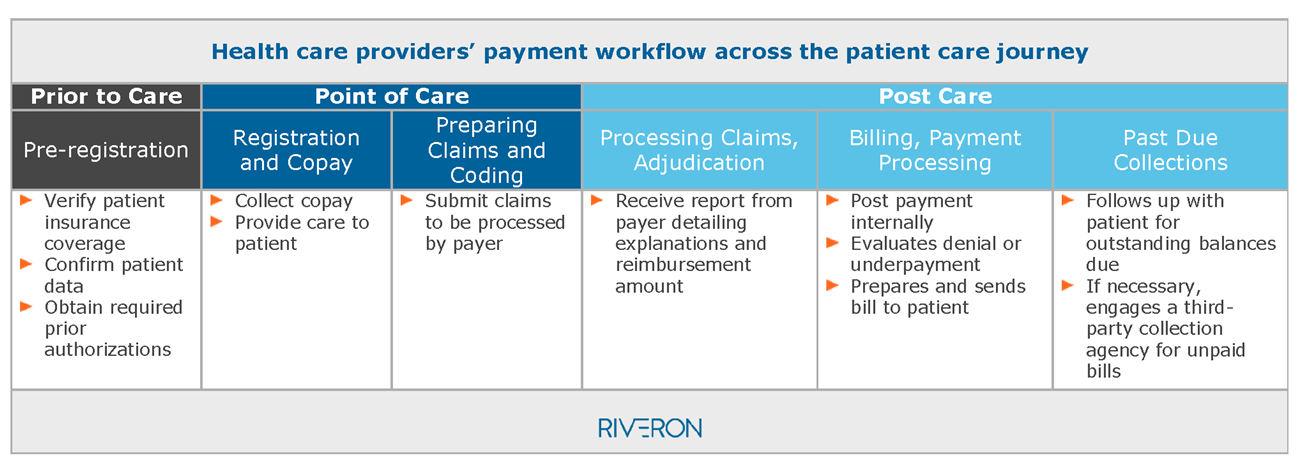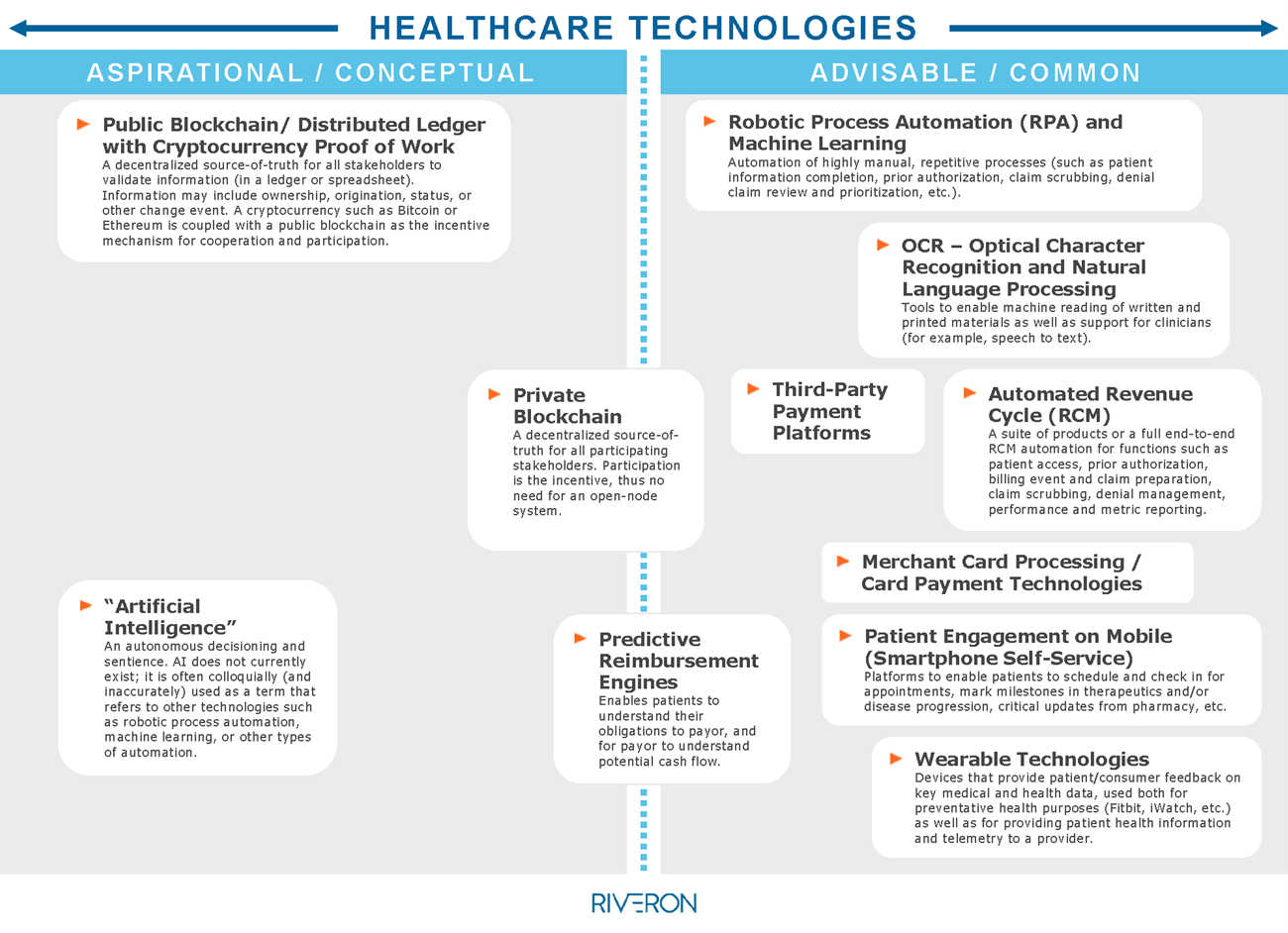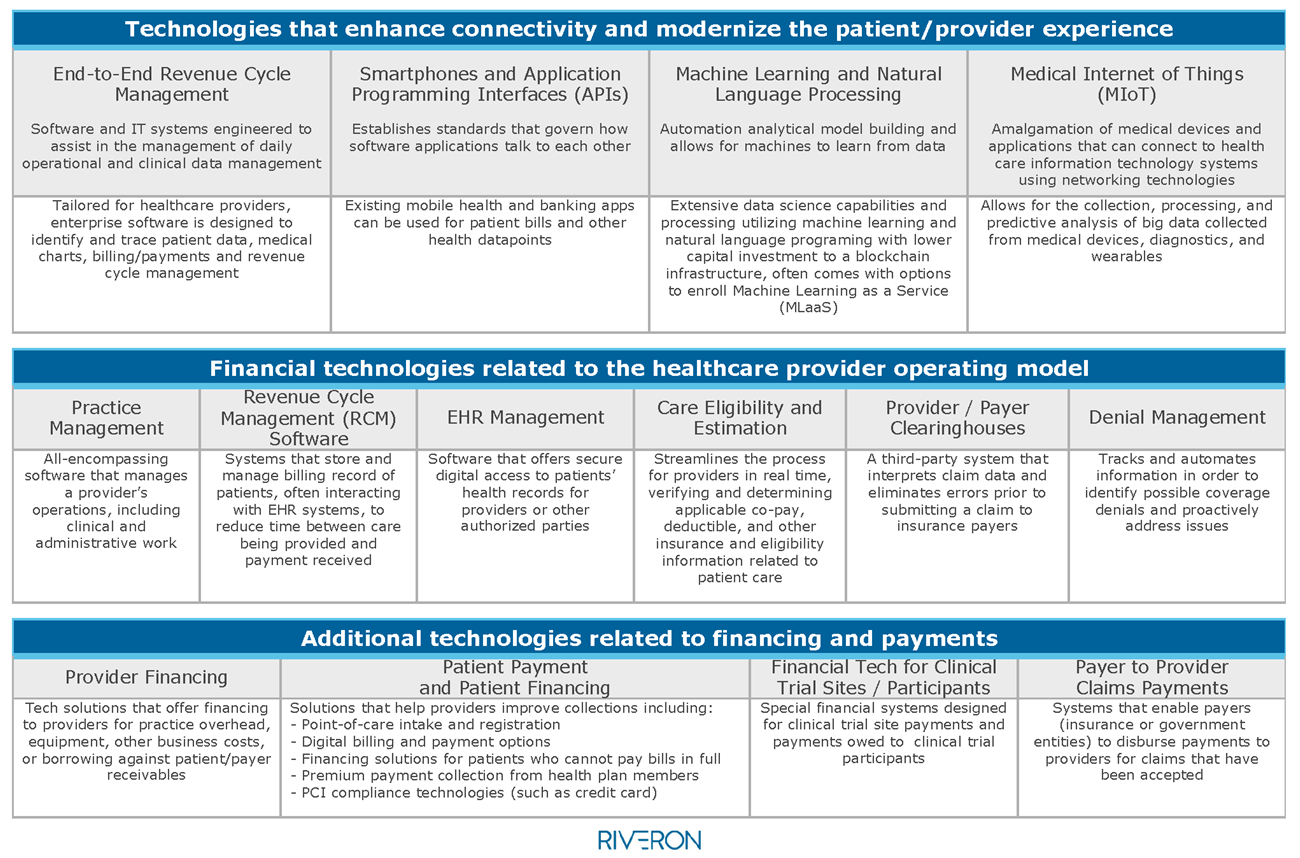Technology Innovation Considerations for Healthcare Providers
An effective digital journey in the healthcare industry starts with understanding and clearly defining the challenges being addressed and improving organizations with the right technology solutions.
Across many sectors, digital transformation initiatives are helping companies to scale, move away from manual inefficiencies, and better serve customers. Healthcare providers have an especially complex path to modernizing financial and operational functions using technology.
Healthcare organizations are bombarded with technology options that could improve operations and ease regulatory burdens. In provider organizations, leaders and key stakeholders need to weigh which of these technologies are advisable to adopt into a healthcare setting now versus those impractical to implement until suitable advancements are made. In the near term, implementing the right technologies can help providers modernize and drive more efficient regulatory compliance, better manage revenues, and reallocate workers’ efforts to focus on improving patient care.
The tech mandate, driven by a growing administrative burden
Growing regulatory responsibilities for healthcare providers have drastically expanded a burden of administrative requirements, increasing compliance-related efforts and mandatory safeguards of patient health records. A substantial growth[1] in the number of administrators is a direct result of requirements unique to providers in the healthcare industry. Despite the prevalence of administrators, there remains a high burden on clinicians for documentation that extends before and after each encounter with a patient.
Figure 1: The complexities of managing revenue for healthcare providers

Beyond the clinical complexities related to each patient visit, one of the greatest inefficiencies is managing a provider’s revenue cycle (see Figure 1). Providers must ensure they have considered the processes and challenges associated with the revenue cycle including patient access, eligibility and prior authorization, registration, insurance information, diagnostic and procedural coding, claims preparation and processing, billing event management and denial management, and payor relationship management. Across these elements, providers should seek to maximize reimbursement for each episode of care event. Poor consideration of the processes and staff expectations for the revenue cycle can lead to reimbursement denials, bad debt, and ultimately impact a provider’s cash flow.
Healthcare providers must navigate patient visit protocols and manage their revenue cycle amid complex regulations. Following the trend of hiring more administrative staff will not alone solve the everchanging challenges at hand in delivering patient care; providers will be forced to adopt new technologies to achieve desired efficiencies.
To better manage finance functions and associated inefficiencies, the landscape of emerging technologies encompasses many options—from various digital platforms to more cutting-edge financial technology. Healthcare providers can begin by understanding the relevant technology landscape and how it fits within an organization’s broader digital maturity.
Understanding which technologies fit the needs of provider organizations
When contemplating which technologies can successfully address the issues at hand, healthcare leaders and key stakeholders must fully evaluate the entire end-to-end operating model: clinical and patient safety, information and clinical technology, revenue cycles, and finance and accounting. Amid legions of technology solutions pitched to care providers (and plenty that cater toward a niche such as behavioral health or ophthalmology), important factors are often overlooked such as the impacts to the provider system and its employees and the feasibility of the solution. Feasibility depends both on the readiness of the technology itself as well as an organization’s maturity.
Figure 2: Technology for healthcare providers – a readiness spectrum
Some aspirational technologies are not yet mature and might not be ready for most healthcare providers to use for several years, except in exploratory cases. There are other technologies that are more industry-ready and advisable to implement at many of today’s provider organizations; these initiatives can improve financial operations and drive other efficiencies for providers and patient care.

For providers, some technology is not ready for primetime
Some technologies are enticing but may not be feasible for healthcare providers. A major example of this is blockchain[2], which is currently enticing to some healthcare organizations because it is a cutting-edge technology, and some argue in favor of blockchain as a trusted platform to solve many issues in healthcare. Despite its enticing nature, leaders at healthcare provider organizations should consider that blockchain presents multiple impediments to its adoption due to the steep capital investment and the immature and untested nature of the technology.
Ready now: technology that can improve business for providers
Beyond the buzz of blockchain, many emerging technologies are gaining adoption in the healthcare industry. The business of healthcare depends on payments, and it will be of value to provider organizations to modernize this aspect of the experience, both to improve revenue cycles and to drive better patient outcomes. Financial technology, or fintech, can help healthcare providers enact these desirable improvements in a variety of ways (see Figure 3).
Figure 3: Technologies that modernize and improve the patient and provider experience
Implementing these technologies might allow providers to transfer focus from the administrative burden and center the practice on improving patient outcomes, improve revenue management, claims processing, and more.

Source: Tech Target’s overview of revenue cycle management.
From possibilities to reality: implementing the right solutions
When considering the many technology solutions claiming to make an organization better, leaders may struggle to decipher which technologies are appropriate for the healthcare sector and the needs of the organization. To find technology that helps providers modernize and be more efficient, leaders need to understand and clearly define the challenges being addressed. With this understanding in place, the organization should evaluate and select the appropriate solution. At all stages of evaluation and implementation planning, leaders and advisors should consider the primary, secondary, and tertiary impacts of that technology change to patients, payor and vendor relationships, regulatory bodies, and the organization itself—in that order.
Healthcare organizations should follow the following framework to ensure an effective technology implementation process:
- Gather business and technical requirements. The provider organization’s leadership team, key stakeholders, and technology advisors should gather the targeted business requirements and use this information as a guide when exploring applicable technology vendors.
- Scope and rank technology vendors. Providers should follow a process that narrows the pool of potential technology solution vendors through a preliminary assessment. A vendor scorecard should be used to quantify overall rankings in a uniform and comprehensive manner.
- Conduct targeted demos. Arrange scripted demonstrations with the top-ranked vendors from the prior stage. Pressure test whether the vendors meet the priority needs of the business and further evaluate change management and technology adoption considerations.
- Make the technology selection. Determine which of the top provider’s offerings best align with business needs such as functionality, timeline, cost structures, integration, and other factors, and make a collaborative selection decision.
- Plan for the implementation. Finalize all integration needs and governance, working closely with the vendor to align expectations for implementation. Allocate resources for the applicable tasks and obtain necessary approvals from leadership and stakeholders so that a seamless implementation phase can begin.
Amid the growing array of technology choices, healthcare organizations should be guided by desired outcomes when selecting solutions that enact effective changes and reduce prevalent administrative burdens. To learn more about how other organizations have successfully selected and implemented technologies, visit Riveron’s success stories page.
Footnotes:
[1] Regulations driving growth of administrator roles: Since 1975, relatively in line with population, the number of physicians in the United States grew approximately 150%, but the number of healthcare administrators increased approximately 3,200% during the same time due to several new regulations being enacted.
[2] Blockchain: a decentralized, distributed ledger for peer-to-peer transactions (on a public or private network) that enables the flow of data to be stored and disseminated in a verifiable and efficient manner. Blockchain has the capability to store and share sensitive patient health information cross-border, enable automation through smart contracts, provide medical device connectivity and security within the internet of medical things (“IoMT”), and preponderance of interoperability amongst existing fragmented healthcare electronic health records (“EHRs).

